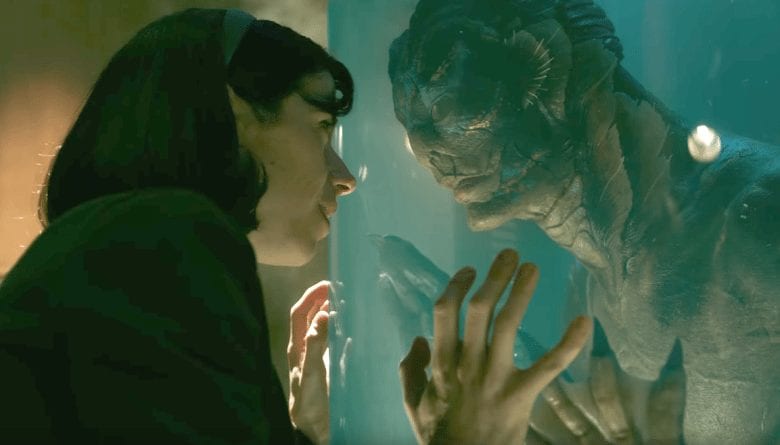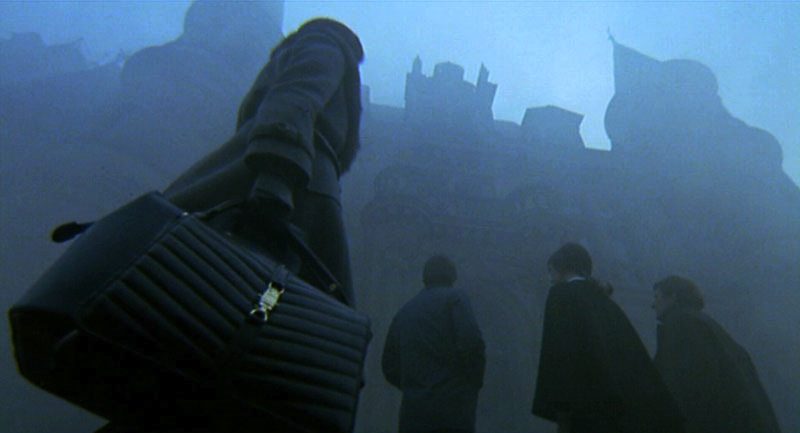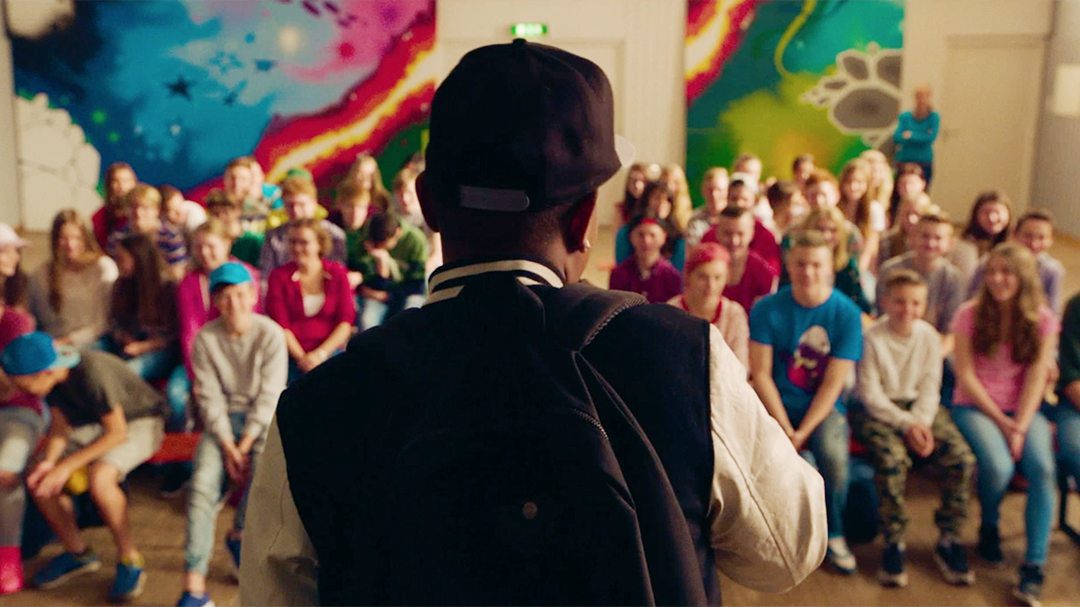?Decency is an export. We sell it because we don?t use it.?
Guillermo del Toro?s films are sometimes referred to as fairy tales, fables, or parables, but always much darker than we usually think of such things. Those characterizations are not just because of fantastic, mythical beings in the stories. It is also because these stories have a strong moral center that uses a fantasy world to challenge our understanding of our own world. All this is true of his newest film, The Shape of Water.
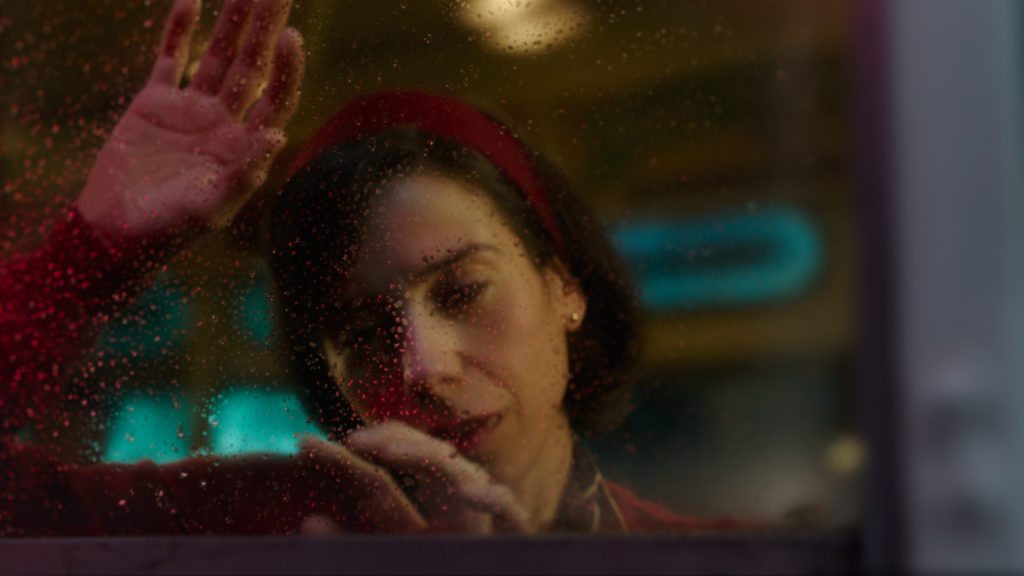
Sally Hawkins in the film THE SHAPE OF WATER. Photo by Kerry Hayes. ? 2017 Twentieth Century Fox Film Corporation All Rights Reserved
The film is set in the Cold War, a time that some saw as a great battle of good versus evil. (Of course, which side you were on would affect which side you viewed as good.) In a secret government facility, Elisa (Sally Hawkins), a mute janitor, discovers a strange creature (Doug Jones) being held captive. It is amphibian and resembles the Creature from the Black Lagoon. The creature is being held there by Richard Strickland (Michael Shannon), who brought the creature back from the Amazon because it might hold secrets to give the US an advantage over the Soviets in the space race. In time, Elisa secretly forms a relationship with the creature and enlists the help of a co-worker Zelda (Octavia Spencer) and neighbor Giles (Richard Jenkins) to free the creature from the lab to save its life.
Because of the setting, the film allows reflection on those ?good old days? and how they may fall short of our golden memories of them. There are clear distinctions between classes, races, and men and women. But the story revolves around the differences between the marginalized and the entitled.
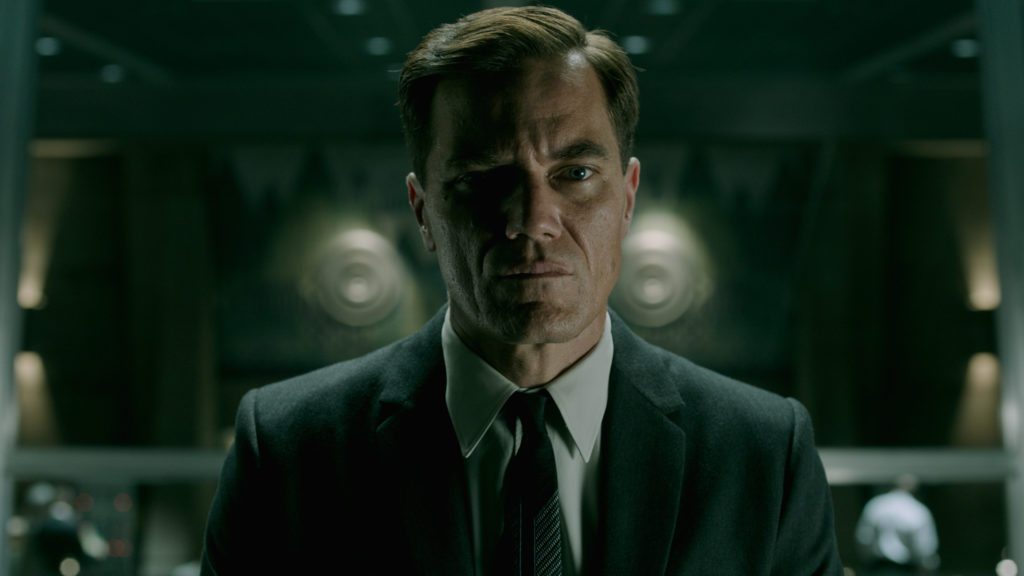
Michael Shannon in the film THE SHAPE OF WATER. Photo by Kerry Hayes. ? 2017 Twentieth Century Fox Film Corporation All Rights Reserved
Del Toro employs an interesting device to illuminate the issues: biblical stories. Strickland has a worldview that is informed by a particular understanding of scripture. That understanding revolves around power. He believes he can treat the creature as he does because humans are created in God?s image?and he sees himself more in God?s image than other people. When he learns Zelda?s middle name is Delilah, he brings up the story of Samson, which he also reads as a story about power and being the conduit of that power. As we watch we see that even though he knows scripture, he has a distorted view of its meaning.
But the key biblical story alluded to in the film is Ruth. Del Toro doesn?t tell us the story (as with Samson). He just gives us an allusion to the story and lets us find how to use that tool to read the film. Elisa lives above a movie theater that is currently showing The Story of Ruth. That biblical account is also about the marginalized. Ruth was a foreign widow (two forms of marginalization). Elisa has been abused as a child and is now mute. The creature is a prisoner and totally out of his element.
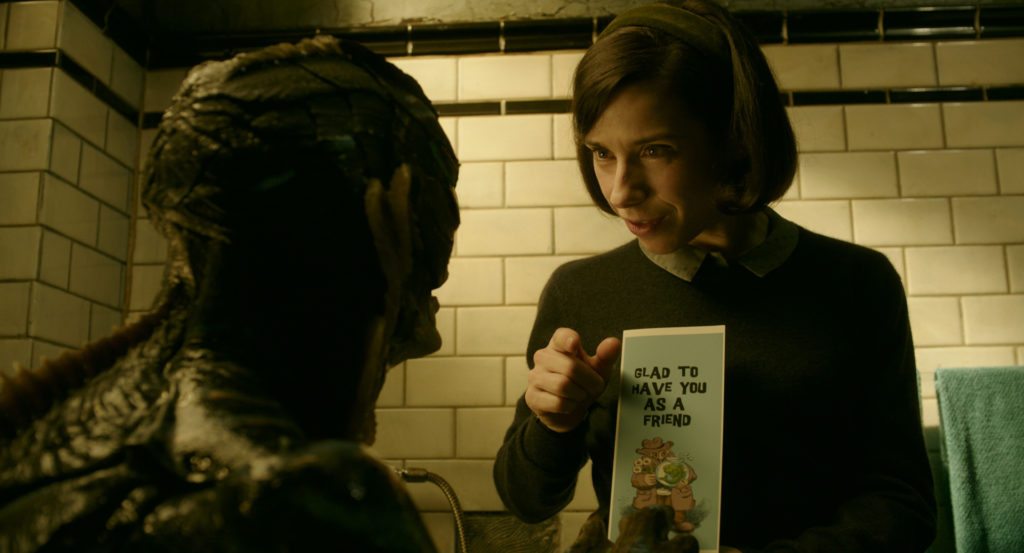
Doug Jones and Sally Hawkins in the film THE SHAPE OF WATER. Photo Courtesy of Fox Searchlight Pictures. ? 2017 Twentieth Century Fox Film Corporation All Rights Reserved
In the story of Ruth, Ruth is rescued from her dire situation through finding a relationship with Boaz, a distant well-to-do relative. There is a bit of seduction in Ruth?s story, and in this one as well. But as l look at this story through the lens of the book of Ruth, I?m not sure which character is in the role of Ruth and which is in the role of Boaz. Certainly, Elisa rescues the creature from his imprisonment, but he also rescues her from her loneliness and pain. I have come to the conclusion that they each serve as Boaz to the other. They both bring a kind of salvation that give life to each other through their love.
It is good to remember that the biblical account of Ruth arose during a time of marginalizing those whose Jewish lineage was in question (even though the story is set much earlier). As we look at today?s world, we see many who are on the margins of society because of poverty, race, immigration status, sexual identity, and many other reasons. The Shape of Water provides a fable that calls us to act with decency (something that the powerful in this story see as unimportant) towards those around us. Today?s world still needs to live out that story of Boaz and Ruth.
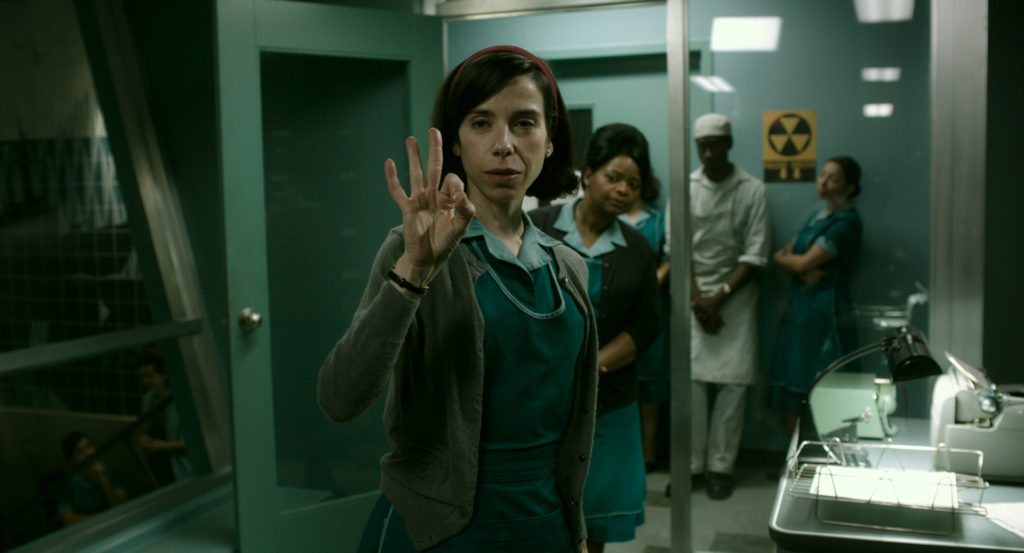
Sally Hawkins and Octavia Spencer in the film THE SHAPE OF WATER. Photo Courtesy of Fox Searchlight Pictures. ? 2017 Twentieth Century Fox Film Corporation All Rights Reserved

